In his 1973 article Mis on disain?, What is design? for the magazine Pioneer, the official organ of the Pioneer Organization of the Estonian SSR, Bruno Tomberg opined that “Kõikjal - kodus, koolis, tööl - oleme ümbritsetud esemetest, mis moodustavad meie keskkonna”1, ‘everywhere - at home, at school, at work - we are surrounded by objects that form our environment’, continuing, ‘the environment, however, must satisfy our diverse and very different needs. Almost all of these objects, from vehicles to pens, can be produced industrially today. The role of the industrial artist in the design of industrial production is increasingly important."2
With the exhibition Bruno Tomberg. Inventing Design, the Estonian Museum of Applied Art and Design, Tallinn, explore the career, oeuvre and influence of Bruno Tomberg and thereby allow one to approach appreciations of how he understood not only the environments in which we exist and the relationships between humans, objects and environments, but also the role of design and the responsibility of design, of the designer, in those relationships.......
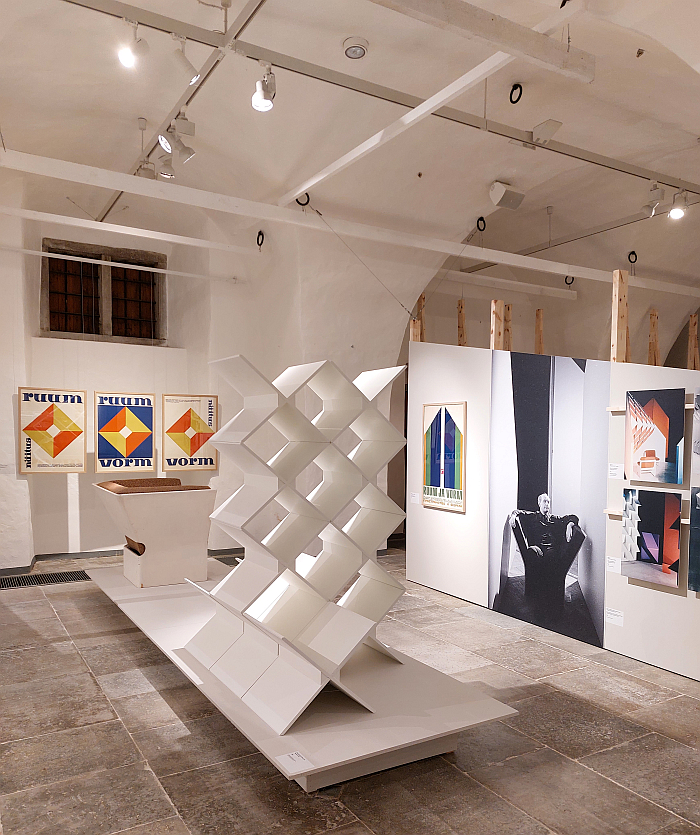
Born in Parnü, on Estonia's west coast, on March 29th 1925, Bruno Tomberg spent the majority of his childhood in Tallinn, where, after graduating in 1944 from the, then, Tallinn X Gymnasium in Nõmme, a southern suburb of the Estonian capital, he enrolled, when only very briefly, at Tallinn Polytechnic to study architecture, before in the autumn of 1945 switching schools, and scales, to study spatial and furniture design at, the then, Tallinn State Institute of Applied Arts; formative, years in which Bruno Tomberg. Inventing Design opens.
Specifically with examples of Tomberg’s painting, design and interior design from his college days, including, for example, a proposal for the interior of the National Library of the USSR, his Diploma project from 1950, and a work that very much presents itself in the National Romantic tinged representative Neoclassical demanded by the Stalinism of the early 1950s; which is in no sense a criticism of Bruno Tomberg, no attempt to align Tomberg as a follower of such dogmatic architecture, far from it, he was a 25 year old spatial design student finding his voice in context of novel political and cultural realities. Alongside his Diploma project Inventing Design's opening chapter also presents watercolours of scenes from the Estonian island of Ruhnu in the Gulf of Riga, and what are described as "furniture drawings from ethnography practice" in context of the islands of Kihnu, Muhu and Hiiuma, works that concern themselves with vernacular architecture, forms and construction principles, thus early reflections on, immersions in, craft and Estonian folkloric that, arguably, would have a strong, lasting, influence on Tomberg. Certainly stronger and longer lasting than the romanticised Neoclassical of early 1950s Stalinist architecture and design.
An opening chapter that also introduces, when very fleetingly, the persons of Edgar Johan Kuusik and Adamson-Eric, two important early influences on the young Tomberg, two protagonists who, arguably, as with craft and folkloric, would have a lasting influence on Tomberg's work and career. The former an architect, who was (briefly) expelled from the Union of Architects of the Estonian SSR in 1950, one presumes for representing positions contrary to Stalin’s, who served as Chair of the Interior Design department during Tomberg's studies, and who Tomberg later refereed to as his Õpetaja - Kolleeg - Guru3, Teacher - Colleague - Guru, which given Kuusik's relationship with the Stalinist authorities allows for an alternative perspective on Tomberg’s relationship with his Diploma project, or more accurately, Tomberg’s relationship with the formal expression of his Diploma project; the latter a painter by training who had studied in Paris in the mid-1920s, you do the math, who was an active protagonist of and advocate for applied arts, who in 1945 was appointed Rector of the Tallinn State Institute of Applied Arts, before being removed in 1949, again, one presumes on account of a lack of Stalinist credentials, but who returned to the institute as a teacher in 1953, following Stalin’s death and the end of enforced architectural dogma and the introduction of more pragmatism, at least briefly. An Adamson-Eric whom Tomberg called his Meister - Õpetaja - Kolleeg4, Master - Teacher - Colleague; and an Adamson-Eric of whom there is an argument to be made that the interplay between Adamson-Eric and Tomberg, the influence of Adamson-Eric on Tomberg, defines the path of creativity in Estonia away from Art Nouveau and towards industrial design, the path from applied art to design in the course of the 20th century in Estonia. Not the only path, obviously, and not a journey travelled by those two alone, obviously, but also those two on that path as a component of that journey.
If an opening chapter that regrettably doesn’t introduce another person Bruno Tomberg met at the Institute of Applied Arts in the late 1940s and who was to have a strong, lasting influence on his work, his career, his positions: Mall Haas, a, then, textile design student who following their marriage in 1955 became Mall Tomberg and who is and was an ever present, an important ever present, in the Bruno Tomberg biography.
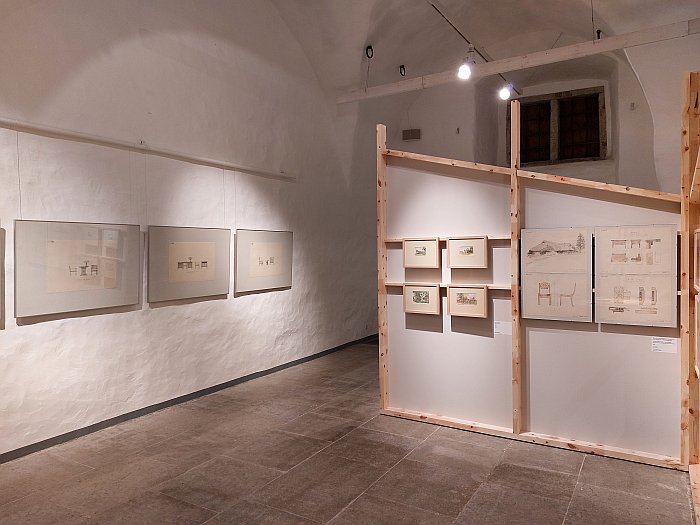
From its opening chapter Inventing Design unfolds its exploration of and discussion on Bruno Tomberg in the course of 7 brief chronological/thematic chapters, starting with a focus on Bruno Tomberg as a designer of objects and spaces, components of his biography that in many regards began during his time at the Institute of Applied Arts, that continued with a tenure between 1950 and 1951 at the, sprightly titled, Tallinn V. Kingissepa Pulp and Paper Mill where he designed wallpapers, examples of which can be viewed in Inventing Design, examples which express themselves as stupidly simple graphic works based on nature and repeating geometry, expressions that not only indicate an acquaintance with Art Nouveau but that predict coming directions in European wallpaper and textile design, and also continued through interior design commissions for, for example, the kindergarten of the Moscow Writers House, the Kohtla-Nõmme Miners Club in north-east Estonia, or dining room furniture for the home of the Moscow based, exiled Turkish, writer Nazim Hikmet, works for Hikmet only present in Inventing Design as photos via which they confuse and delight in equal measure, before in 1956 Tomberg joined the so-called Kunstitoodete Kombinaat, Art Products Factory.
An organisational form that, by all accounts, existed across the Soviet Union, which, and summarising more than is prudent but which limitations of space demand, in its Estonia manifestation originated in context of the forced post 1939-45 War nationalisation of independent applied arts businesses, which was run by the ESSR Artists Association and which sought to “provide suitable working conditions for [applied] artists, market their work and present product samples to industry for mass production”5, or as Kai Lobjakas opines, in context of “influencing people’s taste and promoting production quality” by way of facilitating the efficient effective mass production of consumer goods, the Kunstitoodete Kombinaat was “to set a standard for the model on which a well-designed object of applied art could become a product”6: was to develop meaningful, contemporary objects at an applied art scale that could be extrapolated to an industrial scale. And which thus stands as interesting moment in not only the relationship between applied art and industry, but also in the (hi)story of the development and supply of objects of daily use in the lands of the then Soviet Union. And an interesting component of the (hi)story of forced nationalisation in the lands of the, then, Soviet Union and its eastern European neighbours. The latter of which we may well return to at a later date.
And a tenure at the Kunstitoodete Kombinaat during which, one can argue, Bruno Tomberg not only became established as a furniture and spatial designer as much as being identified as a designer, but where his positions, approaches and formal expressions of furniture and interiors developed and became established. Positions, approaches and formal expressions, practice as a professional designer, Tomberg continued to develop and establish following his departure from Kunstitoodete Kombinaat in 1964 to take up a teaching post at his alma mater, the then renamed, Estonian National Art Institute, a return to his alma mater to which we shall return in a couple of minutes.
Developments in and of Bruno Tomberg as a furniture, product, industrial, interior and exhibition designer over the decades that can be approached and explored in Inventing Design from a variety of perspectives including via a 1959 wooden stool with a woven cord seat, an object that exists simultaneously as a craft and an industrial product, that is most satisfyingly reduced in terms of construction and spatial demands, and which does that ever joyous thing of arguing it is a vernacular object although you know perfectly well it isn't, but never for a minute could you accuse it of mocking or appropriating vernacular, of taking advantage of vernacular, for in its heart, in its soul it is, if it provides for a comfortable, secure seating experience is another question, but we’re not prepared to doubt that it does; two folded paper lamps from ca. 1964, in both of which one sees a familiar acquaintance with, and influence of, works by the likes of a P.V. Jensen Klint or an Isamu Noguchi, but which are no copies, rather interpretations, amalgamations of such influences into independent, self-confident objects with their own voice and means of expression, the taller of which not only in its echoes of Sputnik, pun intended, allows it to contribute to reflections on the much abused and misused term 'Space Age Design", but which points not only upwards but towards the questioning of Functionalist Modernism that was about to define European architecture and design; the interior of the so-called Estonian Creative Associations Club, a.k.a. Kuku Club in Tallinn, a project from 1957 for which Tomberg realised a number of works which, judging from the photos, we never personally experienced his interior, represent a paring down and rationalising of imagined folkloric models in a mix of natural and industrial materials. And also through both the concept and realisation of the 1969 exhibition Ruum ja Vorm, Space and Form, and the works he realised for Ruum ja Vorm.
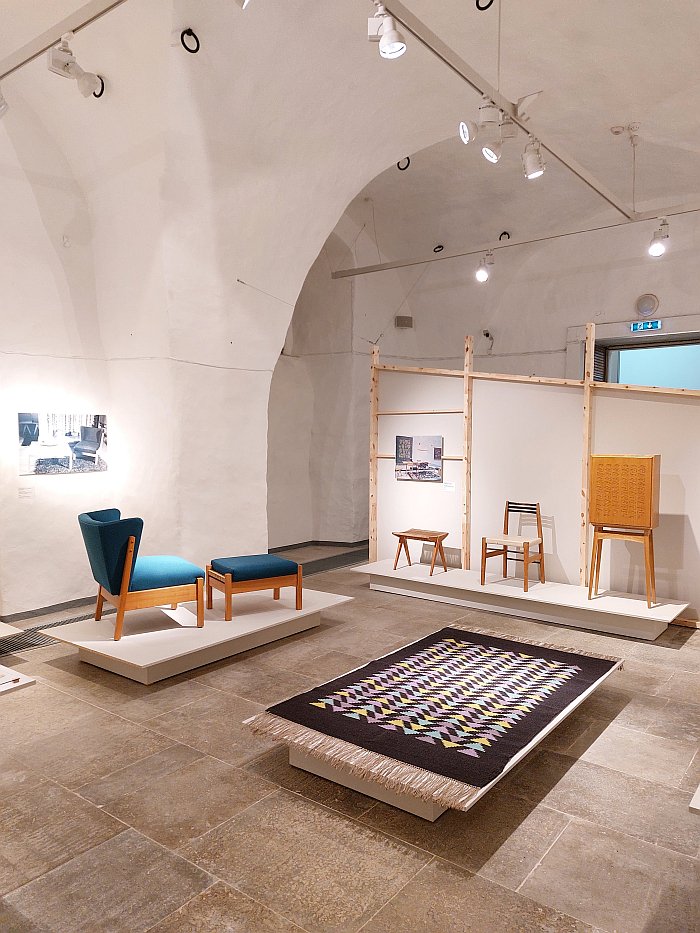
A Ruum ja Vorm co-initiated by Tomberg, the, then, head of the ESSR Artists’ Association as the formal organisers, that, as previously noted, was conceived as a platform for more experimental and conceptual approaches to furniture and spatial design, as, if one so will, a counterpoint to the more standardised, generic, approach of the period, and that as such was one of the first exhibitions in the lands of the then Soviet Union to propose alternatives to, and summarising dangerously, a prevailing Functionalist Modernist informed approach to mass market furniture, furnishings and interiors that was so central to the centralised, de-centralised system, in the, then, Soviet Union. A prevailing system that by the late 1960s, arguably, had lost a lot of interest in the applied arts of the Kunstitoodete Kombinaat. Just as most of Europe had lost interest in craft and applied arts.
A Ruum ja Vorm 1969 for which Bruno Tomberg realised a number of stimulating, interesting works, we’d argue important works, including, as can been seen in Inventing Design, a low-down pouffe/upholstered bucket chair, a lounge chair that resembles a longitudinal dissection of a filter funnel, possibly a longitudinal dissection of a flower, such as a tulip, possibly a prediction of Gaetano Pesce's still far, far off I Feltri lounge chair, or perhaps an abstracted letter Y, and a multi-function object that is, without question an un-abstracted X. Is an X. Is an X as a furniture, furnishing, object; an X to which a cushion can be inserted to create a stool, to which a tray can be attached to create a side table, to which other Xs can be attached, and/or stacked, to create shelving and/or a room divider, within which objects can be stored; an X in which construction, aesthetic and function are not so much unified as innately one and the same.
Is a furniture object reduced to a bare minimum that offers near endless possibilities, OK unlike the Ulmer Hocker it very much evokes and whose spirit we read in it, you can't use it as an impromptu step for reaching high shelves, but otherwise is an object for any interior space whose function is defined in the moment of use, in necessity. And the sort of object that while it may imply it should have been possible at the Bauhauses, 'tis after all a geometric reduction to create a communicative object as the basis of a modular system that demands new interior relationships, is an object that comes from craft but demands industry, despite being all those things, we'd argue it couldn't have been possible at the Bauhauses; would argue there was still to much art at the Bauhauses and not such a ready acceptance of the enriching austerity expressed in Tomberg's X. Not so much acceptance of the need to let an object find its place in the world as Tomberg has done; there was still a focus at the Bauhauses on the importance of the presence of the artist in the object, of the primacy of the artist’s definition of the object. By the 1960s thing had moved on. Or arguably, were beginning to move on at an ever greater pace.
And a Ruum ja Vorm 1969 that also presented, in a variety of contexts, work by the likes of, and amongst others, Mait Summatavet, Helle Gans or Toivo Gans, designers who had all graduated from the Estonian National Art Institute in the second half of the 1960s.
Which brings us to another major aspect, another important and defining aspect, of Bruno Tomberg's career and legacy, and another central component of Inventing Design: teaching
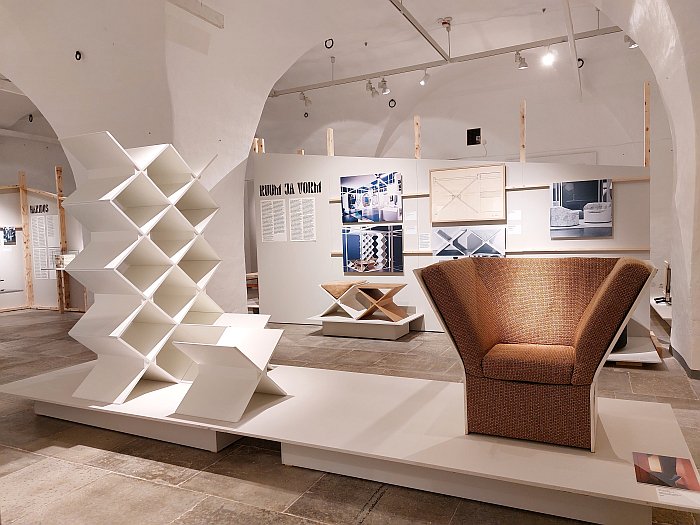
A teaching career that, in many regards, began while Bruno Tomberg was still a student at Tallinn State Institute of Applied Arts where Edgar Johan Kuusik appointed him as an assistant to the Chair in 1949, primarily charged with supervising project graphics; a teaching career which he picked up again in 1964 through his appointment as a lecturer at the Estonian National Art Institute, before being appointed first as Head of the, newly created, Chair of Industrial Art in 1968 and laterally as Head of the Design Department in 1988, a post he held until his retiral in 1993. 1988 - 1993, we’ll, again, leave you to do the math. A senior teaching career in Tallinn that saw Tomberg accompany three decades, arguably, four decades, of Estonian design students on the start of their journeys, the start of their creative explorations, thereby aligning Tomberg very much with the likes of, for example, a Willy Guhl in Zürich, a Christa Petroff-Bohne in East Berlin, a Kaare Klint in Copenhagen, or a Kaesz Gyula in Budapest, as a designer who, in many regards, is more important for the students they taught, the impulse and dynamic they brought to design through the variety of students they set on their paths, rather than for the objects they themselves personally realised. Important and instructive as those objects without question are and were.
A teaching career approached in Inventing Design via a number of channels including an explanation of the development of the Industrial Art department under Tomberg's guidance, including his adoption of the name ERKIDISAIN — ERKI + DISAIN : Estonian National Art Institute, ERKI + Design — for the department as Tomberg felt ‘Industrial Art’, a very programmatic term that is not only looking backwards but implies a necessity of industry, of industrial production, in that which 'artists' realise, see Kunstitoodete Kombinaat, was too limited, not representative of that which the department taught, encouraged and produced, nor representative of that role which the students would be expected to, would have to, fill upon their graduation: Kas tööstuskunstnik on disainer? he asks in the above quoted Pioneer article, Is an industrial artist a designer? And then argues they aren’t, makes a case for the designer, for the ERKIDISAINER. A designer, an ERKIDISAINER who, importantly, Tomberg places at the centre of a multi-disciplinary practice. Or put another way, in the 1970s design was becoming decoupled from industry, much as it once had become from applied art. The old terms were no longer relevant. Change in language is as important as change anywhere else.
In addition, the chapter in Inventing Design on Tombergs teaching career also features the highly informative film Viis aastat ja kogu elu, Five Years and a Whole Life, produced by the Estonian SSR Culture Ministry in 1975, possibly 1976, in which staff and students at the institute come to word and in which one can approach succinct appreciations of Tomberg's positions on, for example, the role and function of design, of the designer, of relationships between design and society, on the condition of the contemporary Estonian urban environment, or the condition of the global natural environment, the environmental challenges the 1970s faced. And a film which through the contributions of two of Tomberg's teaching colleagues, Udo Ivask and Villu Järmut, and through the comments of numerous students as regards the positive and negative of the course, also allows deeper appreciations of the environment in which Estonia design students learned in the 1970s. Deeper appreciations enabled for all who don’t speak Estonian because the film features English subtitles, an important reminder that one of the major hurdles to better appreciating that which is common in global design, in global society, is the lack of a common spoken language.
Which isn’t a complex or high hurdle.
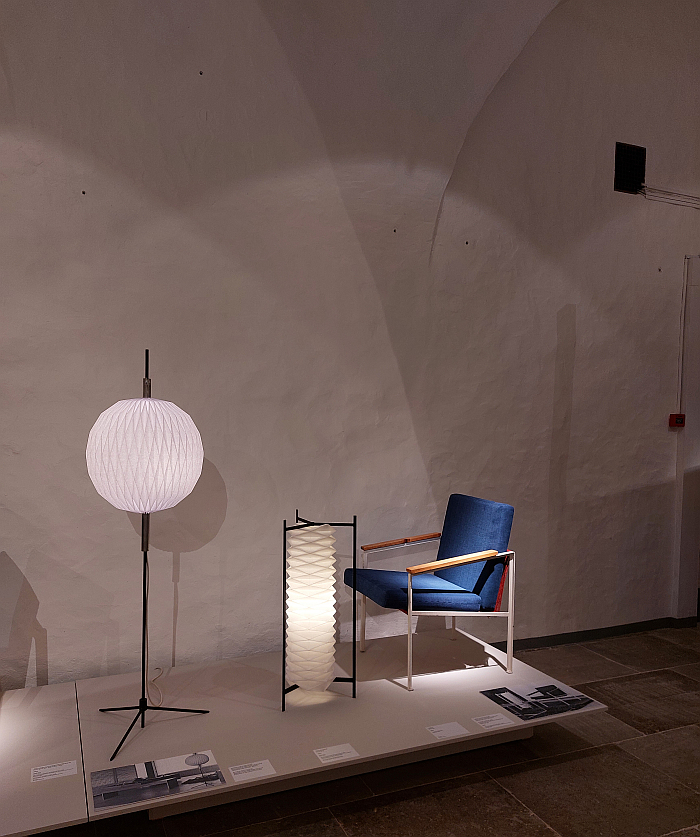
A teaching career also approached in Inventing Design via both examples of the international networking Tomberg undertook in context of his tenures at the Estonian National Art Institute, and by examples of the numerous translations of works on design, art and architecture theory and (hi)story by the likes of, for example, Victor Papanek, Wassily Kandinsky or El Lissitzky in to Estonia he produced; yes, one could claim a preference for left leaning protagonists, but then, arguably, the (hi)story of architecture and design has been leaning so long to the left it’s become almost a natural direction, and as discussed from, for example, Design of the Third Reich at Design Museum Den Bosch, ‘s-Hertogenbosch or Power Space Violence. Planning and Building under National Socialism at the Akademie der Künste, Berlin, when right leaning forces design and build they, invariably, appropriate the positions of left leaning protagonists... but we digress… translations later added to by his 2007 Estonian version of Nikolaus Pevsner's 1930s work Pioneers of Modern Design from William Morris to Walter Gropius, a work that in Estonia could, arguably, be written as Pioneers of Modern Design from Adamson-Eric to Bruno Tomberg, but that's a discussion for another day, and we're still digressing....... translations by Tomberg that represent an important step in expanding the influences, questioning and resistance to and for not only Estonian art, architecture and design students, but for all in Estonia with an interest in the development of the constructed human environment. Which brings us back to overcoming hurdles to allow us to appreciate how much we have in common.
And a teaching career that, in its wider sense, is and was also a component of Bruno Tomberg’s journalism, a genre in which Bruno Tomberg was as prolific as he was in the many others he practised, and equally as varied in his output, publishing as he did innumerable magazine and newspaper articles on a wide range of creative subjects, texts that range from critical assessment to the airy, wispy, generic ‘tips’ so beloved of popular media, but which, much as George Nelson employed the genre, Tomberg uses to help explain disain to a lay public he appreciates as an important ally in advancing disain.
Texts by Tomberg liberally distributed around Inventing Design, a great many of which, very pleasingly, are presented in conjunction with, in context of, the objects and/or themes they concern themselves with. An exhibition design decision that enables a very satisfying, and very simply achieved, deepening of the presentation and the insights it enables. Yes, they are all in Estonian, but whereas previous generations needed professional translators, we have translation apps to help us overcome hurdles. With apologies to all professional translators who thereby lose out. But, hopefully, society gains.
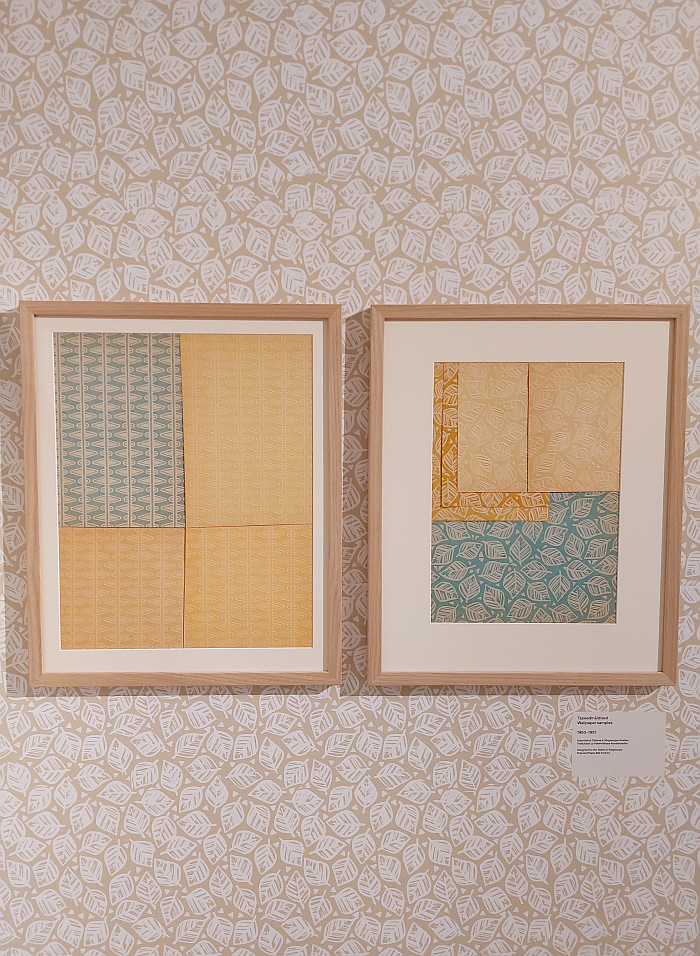
The final chapter of Inventing Design, or at least the final chapter before you retrace your steps back to the Estonian Museum of Applied Art and Design’s main exhibition hall's entry/exit door, but this time with the aid of all you have seen, all you have questioned, all you have began computing since you entered, therefore making it a much slower journey back than out, is devoted to Bruno Tomberg's extensive travels, primarily in context of his various official capacities, and also in context of the numerous international exhibitions of Estonian design and applied art he regularly organised and curated. Travels which took him not only around Europe and the then lands of the Soviet Union but also to Africa. Travels from which he compiled long, and at times detailed, and times rambling, diaries. And travels, as travel often can, as travel invariably does, that served as an inspiration for his work, something that can be experienced in Inventing Design in the presentation of his 1960s and 70s rya rugs via works such as Ramses or Pharaoh's Boat which, as the names imply, were inspired by Egypt. Or the rya rug Nubian Prince which wasn't as the name implies inspired by Egypt, rather was inspired by a chance, fleeting encounter on a street in Moscow.7
Rya rugs, a genre of long pile rugs that originated primarily in Finland before being adopted by Estonian creatives, whose presence reminds that Finland and Estonia were once one and the same country, that the borders (hi)story draws are political, authoritative, not social and cultural, something we should never forget; rya rugs which, in many regards, owe their introduction to Estonia in the 1930s to the influence of, amongst others, Mari Adamson, wife of Adamson-Eric and an artist and educator in her own right, and that were subsequently taken up in the late 1950s/early 1960s by a new generation of Estonian creatives, including, Mall Tomberg, at that time a lecturer in the Chair of Textile Design at the Estonian National Art Institute, and a future Head of the Chair of Artistic Textiles and Costumes, thus reminding of the large number of rarely seen and discussed important, interesting and instructive female creative partners of a male creative who is more visible owing to the male-centric manner in which (hi)story has recorded, and continues to record, the narrative of architecture and design. A reality that needs must change and which makes the absence of Mall Haas from Inventing Design’s opening chapter all the more regrettable and avoidable. Yes, it’s a Bruno Tomberg exhibition, but a Bruno Tomberg is also a Mall Haas.
Rya rugs, by Bruno Tomberg, many of which, not all, but many of which, could grace any contemporary interior without needing to be embarrassed about their age.
A phrase that we could have applied to the greater majority of the Bruno Tomberg works on show in Inventing Design.
And in several cases, we’d argue, would grace many a contemporary interior had Bruno Tomberg been a Swedish, Danish or Finnish designer of the second half of the 20th century, a designer from the western fringes of the Baltic Sea.
But Bruno Tomberg was an Estonian designer of the second half of the 20th century, a designer from the eastern fringes of the Baltic Sea.
And we all know what that means.
Or at least believe we know, claim we know, without ever looking.
Another major, though not complex nor high, hurdle to appreciating the common in us all.
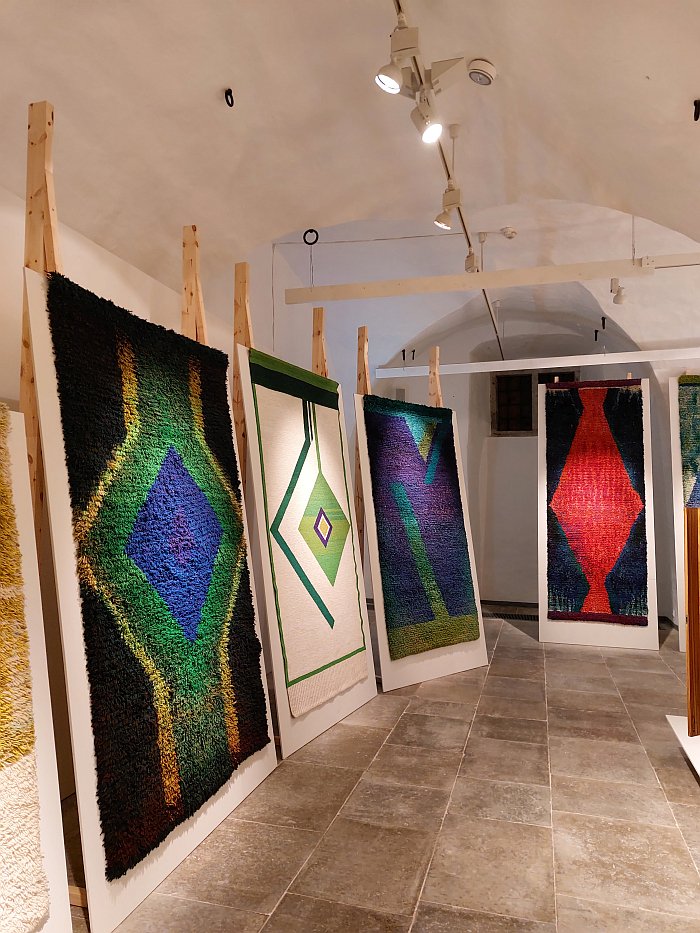
We first came across Bruno Tomberg in context of Retrotopia. Design for Socialist Spaces at the Kunstgewerbemuseum, Berlin, have been more or less been obsessed since that moment, an obsession that has seen us visit Tallinn a couple of times since Retrotopia to learn more, which also means we have, essentially, been waiting since Retrotopia for the Estonian Museum of Applied Art and Design to stage a Bruno Tomberg exhibition/retrospective. It’s approach was tangible in the air in Berlin, but unforthcoming as to when it may be forthcoming.
And while all that is impatiently waited for can, more often that not does, disappoint on its arrival, Inventing Design is an exception to that rule, and is as much an argument for the necessity of its existence as it is an exploration of and discussion on its subject.
A presentation that can be but an introduction to Bruno Tomberg, if one that through providing for a succinct if expansive, intelligently structured and readily comprehensible overview of the career and output of Bruno Tomberg, one that maintains a professional, academic, distance to its subject, avoids the many pitfalls that threaten any and every a long overdue monographic exhibition, not least in context of a subject who clearly enjoys a great deal of sympathy in the museum responsible for the retrospective, not only allows one to better question and scrutinise the work, the relevance, the contexts of Tomberg, nor only allows one to begin to better locate Bruno Tomberg in design (hi)story, but admonishes, insists, you continue to after you leave the Estonian Museum of Applied Art and Design.
A questioning, scrutinising, locating, admonishing promoted and encouraged by the bilingual Estonian/English texts and by the wide variety of works on show, works from which, in addition to the above mentioned, we spent a particular amount of time engaging with, and in many cases are still engaging with, works such as, for example, his 1974 mobile Termo oil radiator for Volta, a work so far removed from the rest of his oeuvre, but just as central to the realities of domestic life in Estonia then and now that it negates those differences and stands as one with the rest of his oeuvre; a 1988 lounge chair in the steel tubing of the 1920s and 30s, a moment, a material, otherwise absent in Inventing Design, but when it appears then in a work that employs that light, ephemeral resilient material for a rigid, unyielding, frame(work), ¿a critique perhaps?, but the X is there, or at least half of it is, in padded upholstery that takes primacy over the steel: or a mid 1950s school desk that in terms of aesthetics, functionality, usability and relevance has lost nothing in the past 70 years. If a desk presented as a film loop whose background music can, does, drive you to distraction. We can still hear it. Are still distracted by it. Or by a family of metal candlesticks from 1960 and a family of wooden candlesticks from 1968, two interpretations of the candlestick, that, lest we forget, defining aspect of the lighting design of Charles and Ray Eames, which despite their wide variations in material, attitude and formal expression, possess the same simplicity, the same efficiency, the same honesty, the same discourse with the material during the form giving process, the same appreciation of the inalienable links, interdependency, between craft and design, works that speak of the lasting influence of craft, but also of the need for craft to interact with and work with industry, without giving up its essences, if it is to remain relevant in an industrial society and not an anachronism for Ye Olde World Fairs. Much as, we'd argue, craft today must interact and work with our contemporary digital society, without giving up its essences.
If a collection of works that for all its variety is and can be but an introduction to the Tomberg canon. A place to start and move on from.
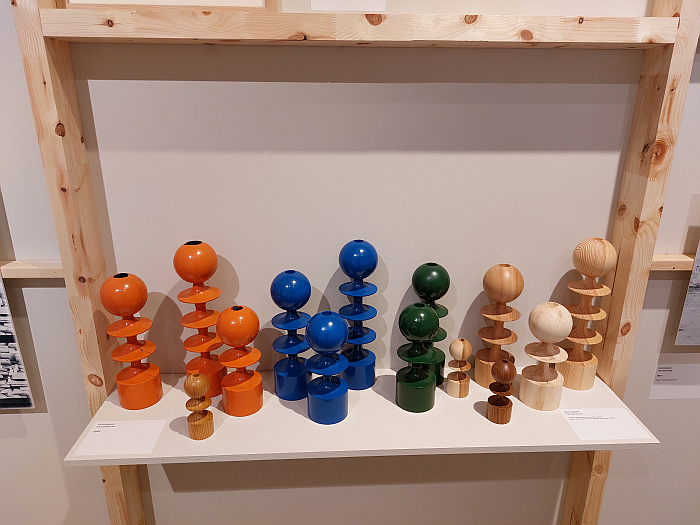
And a questioning, scrutinising, locating, admonishing further aided and abetted by a visit upstairs to the Estonian Museum of Applied Art and Design’s permanent collection exhibition spaces and the opportunity to approach an appreciation of Bruno Tomberg in context of the (hi)story of design in Estonia, starting from the likes of, for example, the A. M. Luther furniture factory, that important, key, protagonist of plywood as a material for objects of daily us, and lest we forget an Alvar Aalto learnt the black art of plywood moulding in Tallinn, took it back to Finland and helped establish it as a material of 20th century Modernism; and moving on over the contributions to the (hi)story of design Estonia by the likes of, for example, a Richard Wunderlich with his reserved, unpretentious approach akin to a Josef Frank, an August Roosileht with his national romantic overtones, or a Jaan Siirak a leading advocate of steel tube furniture in 1930s Estonia, and ever further on to today’s practising Estonia designers. A timeline of design in and from Estonian along which you can sense Bruno Tomberg sliding, quietly, effortlessly.
A permanent collection exhibition that for one brief moment sees a work by Mall positioned next to, in communication with, juxtaposed to a work by Bruno. Works by Mall and Bruno in context of one another. As it should be. Certainly in this case as they are rya rugs, a genre Mall introduced Bruno to the practice of.
And a permanent collection exhibition presentation, an abridged (hi)story of design in and from Estonia, that helps elucidate that Estonian creatives, Estonian designers, Estonian manufacturers, were once on the world stage, before they weren’t, and now could, should be once again. Both contemporary Estonian designers and those from the period when Estonia wasn’t on the world stage, but whose voices should have been, and which still deserve to be heard there. Of which Bruno Tomberg is, we’d argue, one of several. If a particularly important and instructive one.
And an excellent place to start exploring the depths of design in and from Estonia.
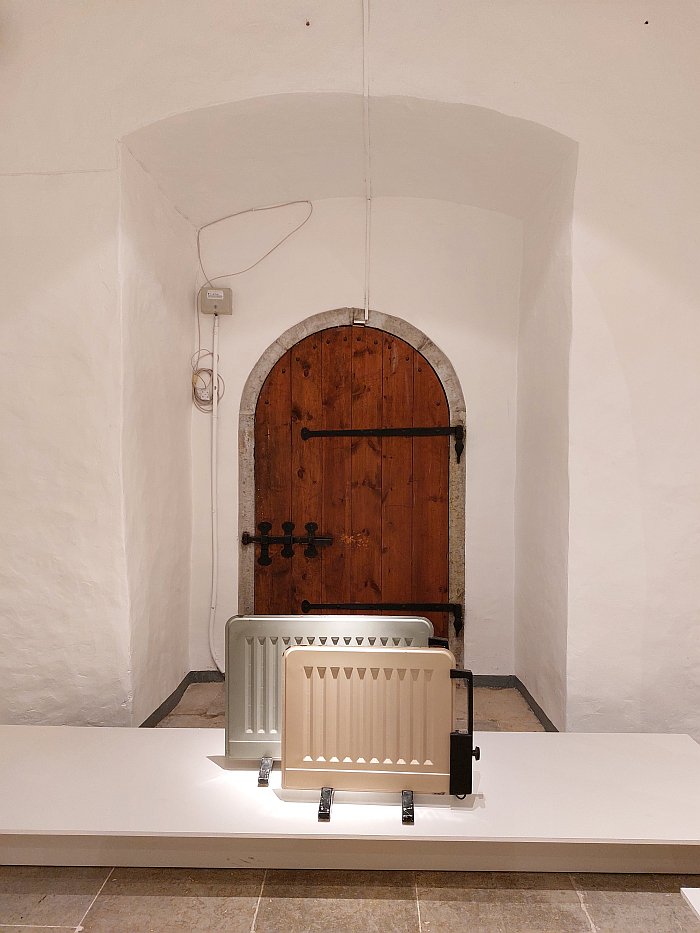
Bruno Tomberg didn't invent design.
He didn't.
It's ridiculous, unsustainable, to claim he did.
But there is an argument to be made, and argument that Inventing Design makes, that in his considerations on our objects of daily use, on the production and supply of objects of daily use, on the relationships between objects of daily use and user, between objects of daily use and the natural and constructed environments in which we all exist, Bruno Tomberg continually asked Mis on disain?, What is design?
A question that has been posed since the early 20th century, one whose answer is fluid, elusive, transient, yet one we can’t ignore, far less neglect in our attempts at answering.
Mis on disain?, What is design?
Bruno Tomberg didn’t and doesn't have all the answers, and not all of his works have aged that well, parts of his oeuvre are very much stuck in times past; but, as Inventing Design allows one to better appreciate, in his approaching of answers he didn't just help contribute to the establishing of design as a practice in Estonia, but for all helped sharpen the distinction between the long established practices of craft and applied art and the, relatively, novel, design, without questing the right and justification of any of the three. And also helped contribute to the development of a definition of design as a responsive multi-disciplinary tool for a human society that, as the diverse and very different needs that must be satisfied within that society became ever diverser and more numerous, had become far, far, too complex to rely on applied art or craft alone.
And while the environments in which human society exist today, our physical environments, our social environments, our digital environments, our natural environments, are not those in which a Bruno Tomberg was active and sought answers, the challenges are the same, the need to explore the borders between applied art, craft, design are the same, the need to question Mis on disain?, What is design?, Miks desain? Why design? Kuidas desain? How (to) design? et al, are the same, the need to develop definitions of design and approaches to design practice in context of contemporary realities and environments are the same. Bruno Tomberg's answers are only partially relevant; however, through better appreciating how Bruno Tomberg approached his answers he can be an instructive and informative voice in helping us approach our answers. Can help us with the ongoing, fundamental, process of re-inventing design for contemporary and future environments.
Bruno Tomberg. Inventing Design is scheduled to run at the Estonian Museum of Applied Art and Design, Lai 17, 10133 Tallinn until Sunday 30th March. By which point Tomberg will be starting his second century. It's about time you got to know him.
Further details can be found at www.etdm.ee
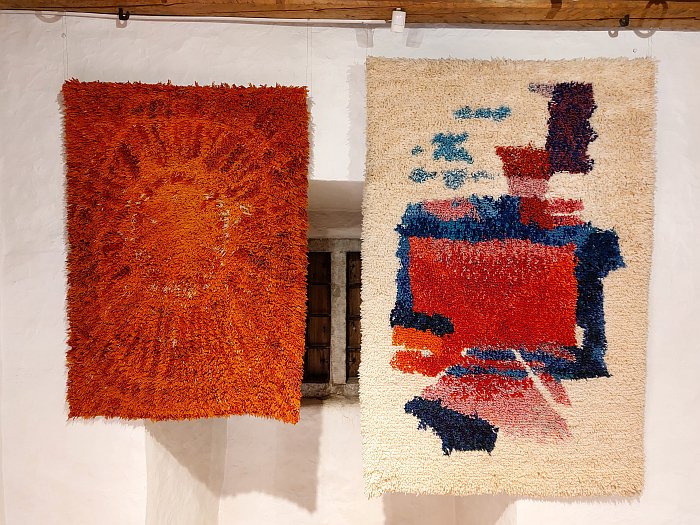
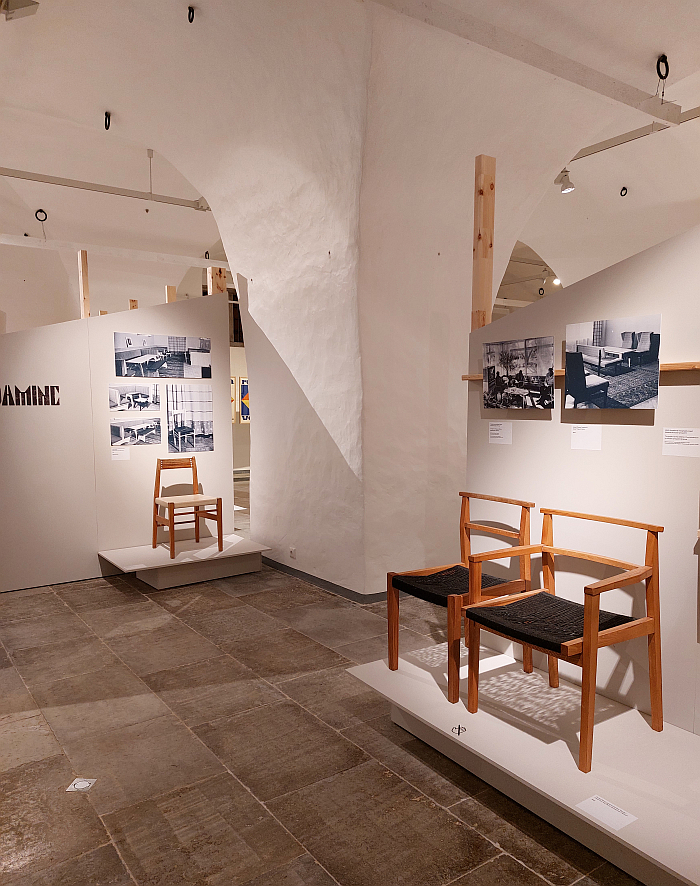
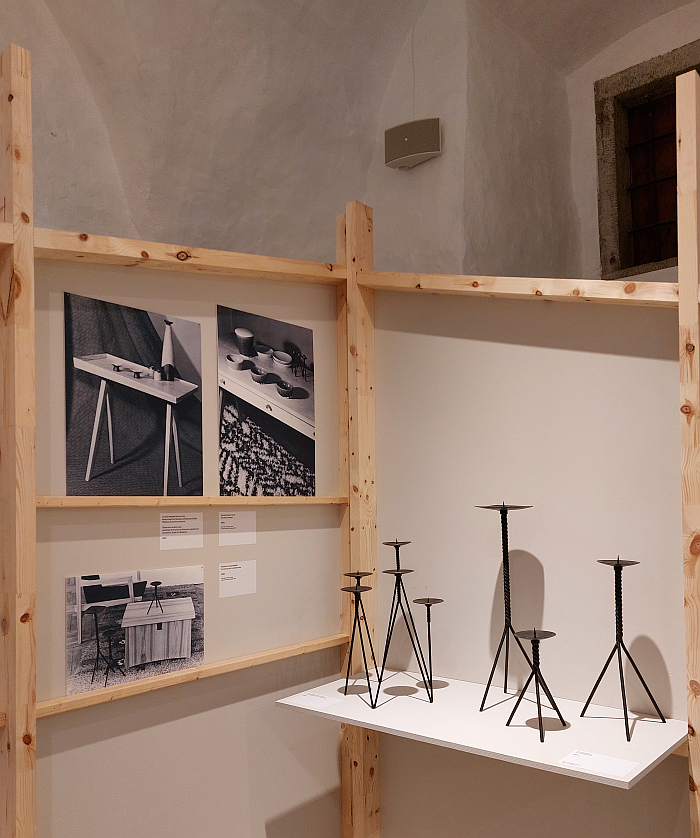
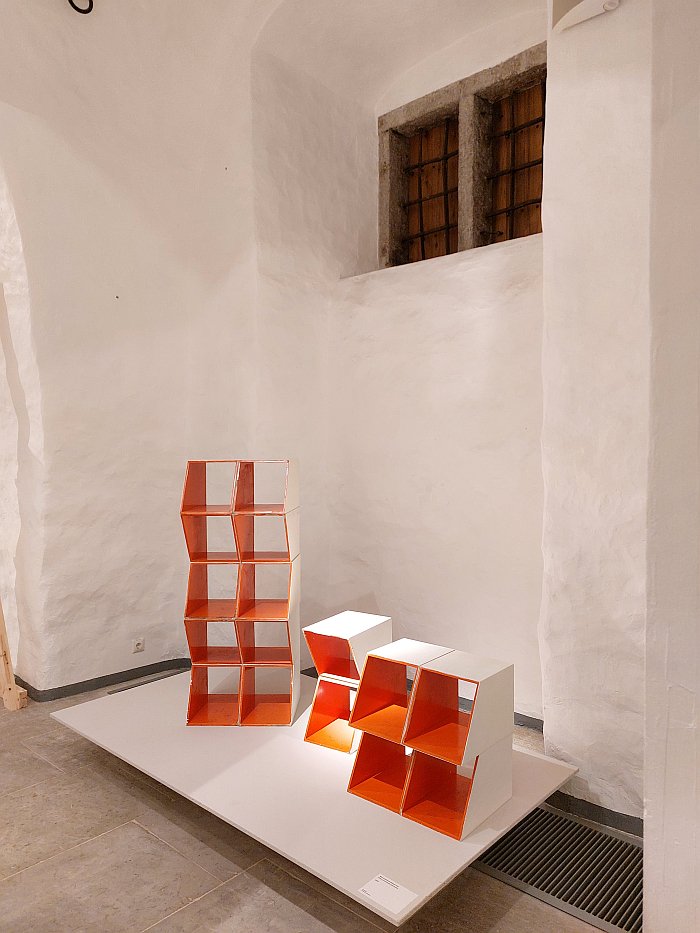
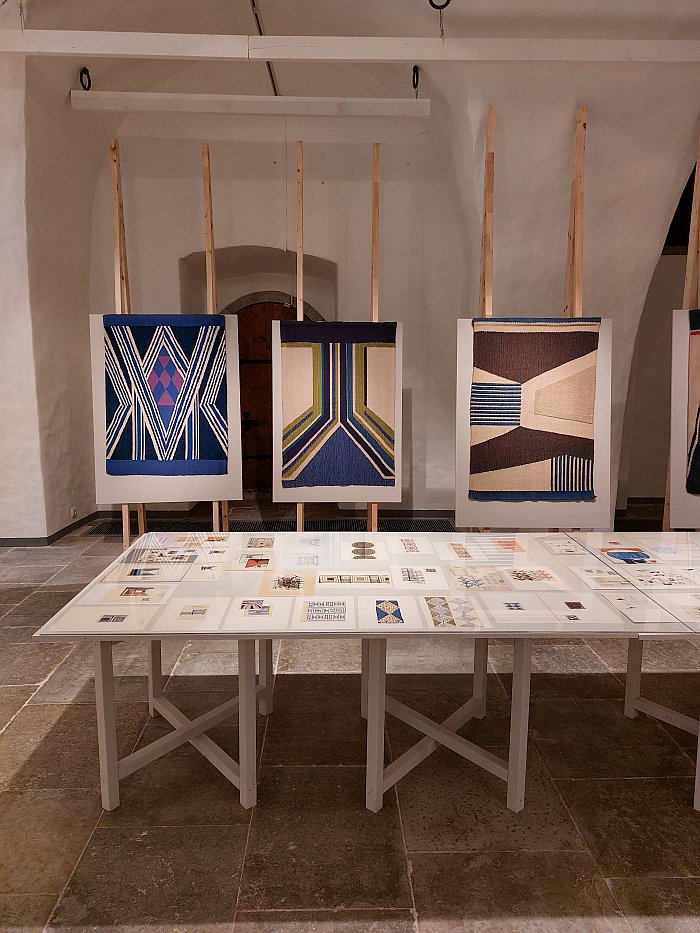
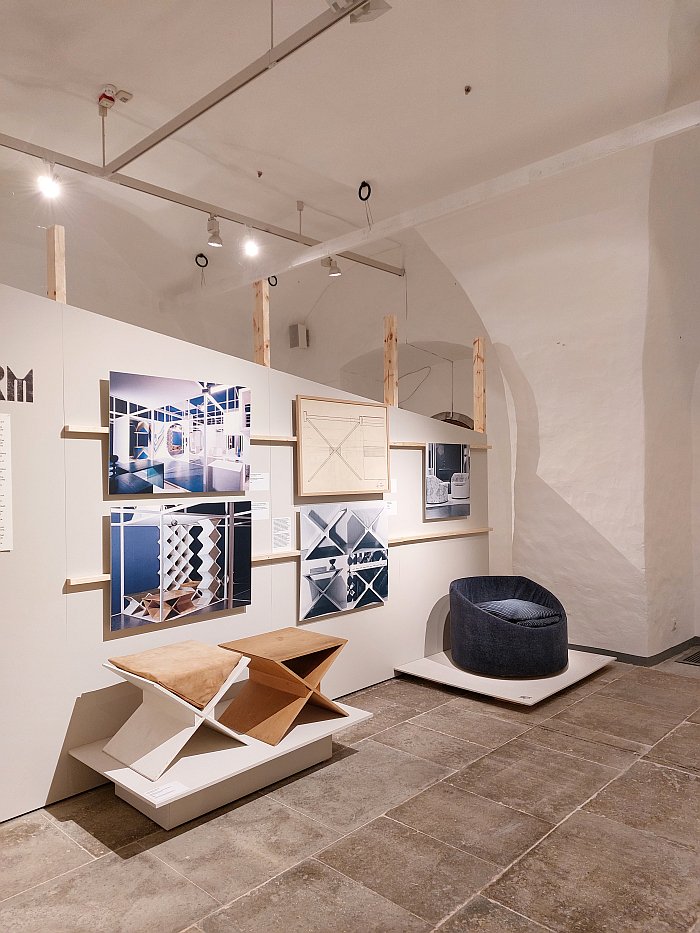
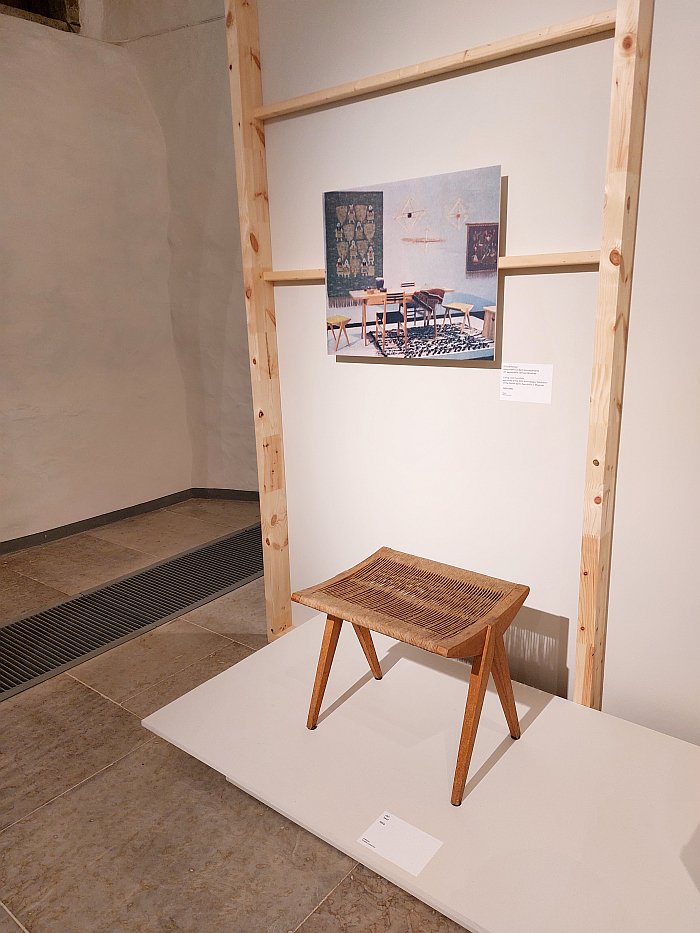
1Bruno Tomberg, Mis on disain? Pioneer Nr 11, November 1973, Tallinn, pages 36-37
2Yes, Pioneer. Yes Communist Party youth organisation, But Pioneer magazine is also a way of speaking to youth, and Tomberg does that in a text that, in our reading, as non-Estonians unfamiliar with the finer nuances of the 1970s Estonian Communist Party, is free of any indoctrination and offers a wide ranging view of what design and what designers do. Certainly what design did in the early 1970s. If a text for Pioneer that also reminds that there is no reference in Inventing Design to Tomberg's relationship with the ruling Communist Party. ¿Is it important? Always when dealing with non-democratic systems, and that regardless of what for a system, and what for an historic period or nation one is dealing with, not least in context of providing context. And context is always important.
3Bruno Tomberg, Minu Õpetajaile, Unpublished manuscript, 2011, Estonian Academy of Arts Library, Archive signature U/T64
4ibid
5Kai Lobjakas, Between Art and Industry. The Art Products Factory in Kai Lobjakas [Ed.], Kunsti ja tööstuse vahel. Kunstitoodete kombinaat = Between art and industry. The art products factory, Eesti Tarbekunsti- ja Disainimuuseum, Tallinn, 2014, page 42
6ibid, page 46
7Bruno Tomberg, Iseendale Iseendast. Minu Reisid 1963 AAfrika, Egiptus, Unpublished manuscript, 2009, Estonian Academy of Arts Library, Archive signature U/T64 Reference is on an unnumbered page.....